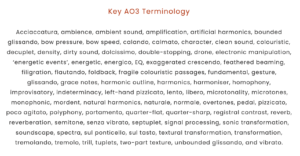Clara Schumann Short Bio:
LSO Animateur Rachel Leach and LSO musicians analyse and perform the first movement of Clara Schumann’s Piano Trio in G minor, Op. 17 – one of the set works on the new Edexcel A & AS Level syllabus.
Annotated score: LINK
Score: LINK
Lesson 3-4
Task 1: Answer the short questions on p.149
Task 2: Question 6 practice p.149
Exemplar essay: Schuman question-6-exemplar
Listening question paper 2019 section A: 8MU0_03_que_20190521 8MU0_03_rms_20190815:
Lesson 5-6
Starter Activity: Listen to Mozart`s Piano Trio in G major Movement 1 (K564)
Discuss the Similarities
- Written for piano, violin and cello
- Instruments share the melody
- Limited range of piano
- Exposition is repeated
and the Differences
- Bridge is shorter
- Fewer dynamic contrasts
- Set in three movements
- 2nd subject modulates to dominant
Lesson 3: Schumann’s Piano Trio:
6. Discuss the emotional and thematic content in the first movement of Schumann’s Piano Trio. How does Schumann develop and vary musical ideas throughout the movement?
7. Analyze the use of texture and instrumentation in Schumann’s Piano Trio. How does he balance and integrate the piano, violin, and cello throughout the composition?
8. Compare the thematic development in Schumann’s Piano Trio to the use of sequences in Vivaldi’s Concerto in D minor. How do these techniques differ in the two compositions?
9. How does Schumann utilize the concept of ‘piano e forte’ in the Piano Trio? Provide specific examples and discuss their impact on the overall expressive quality of the piece.
10. Discuss any notable similarities or differences between the thematic structures and development techniques in Vivaldi’s Concerto in D minor and Schumann’s Piano Trio. How do the composers approach the organization of their respective compositions?
Lesson 7
LO: To revise Clara Schumann`s Piano Trio and practise answering Section A questions.
Starter:
Music dictation:Questions N11 and 12
Activity 1:
Here’s the corrected version:
Listen to the trio while identifying the structure of the piece. Remember, in your exam, it can be played from any place. You should be able to recognize the sections. Also, highlight in the score any repetitions or differences between the sections.
Plenery:
Homework:
Complete exercises:



 String techniques:
String techniques: